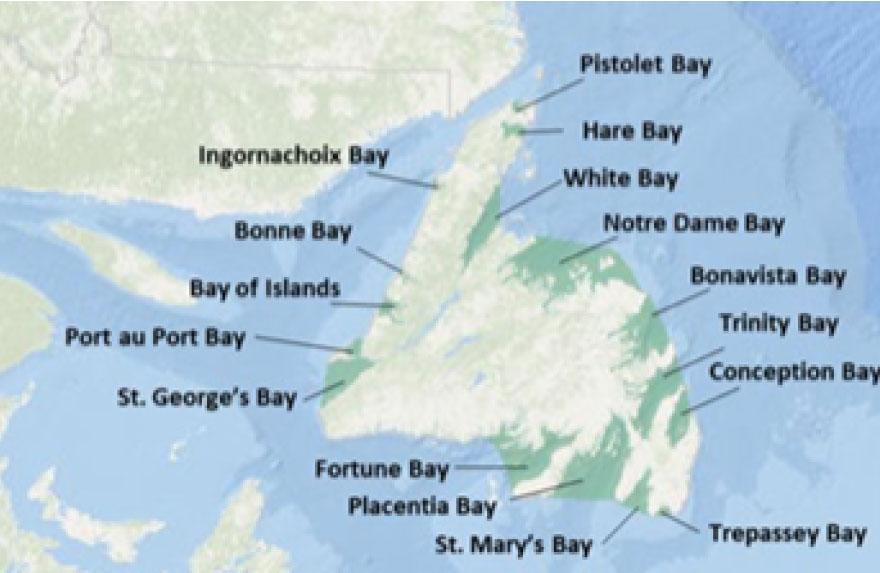Offshore vs. Nearshore vs. Onshore
JURISDICTIONAL BOUNDARIES
The terms offshore, inshore, nearshore, and onshore are used frequently and unclearly in conversations on renewable energy.
ONSHORE/LAND-BASED WIND
Onshore or land-based wind projects are exactly as the name suggests; turbines are installed on land. The aforementioned land-based wind projects do not have approvals for offshore wind developments. These projects fall under Provincial jurisdiction.
NEARSHORE WIND
These inland bays include any proposed wind energy project lying seaward of the low water mark and extends to the “jaws of the land.” Regulations for Provincial Offshore Renewable Energy (ORE) have not yet been written.

OFFSHORE WIND
Offshore wind projects under Federal jurisdiction include any wind farms with 10 or more turbines within inland bays, those beyond the Provincial inland bays boundaries, and extends as far as the 200nm limit. This offshore area will be jointly managed by Provincial and Federal governments and regulated by the Canada-Newfoundland and Labrador Offshore Energy Regulator (C-NLOER) still known for now as the C-NLOPB. Federal laws of general application, such as the Federal Impact Assessment Act, would apply throughout meaning Impact Assessments will be required in this area.
Unlike our Nova Scotia counterparts, Newfoundland and Labrador has never had a detailed definition as to where these “boundaries” are. We have no Offshore Wind Roadmap as they do in NS, and no current plans for or developers pursuing offshore wind in NL. NS has committed to generating 5GW of offshore wind energy by 2030. NL has no such commitment. Governments, onshore wind proponents, and the Canada-Newfoundland Offshore Petroleum Board (C-NLOPB) have stated there are no plans to develop the offshore for renewable energy in the near future. The focus right now is on land-based projects.
